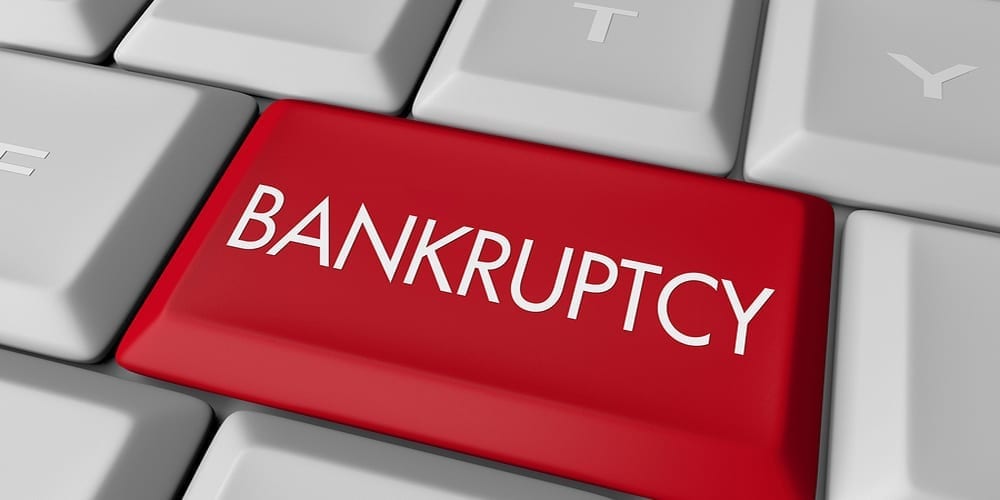This article is a brief overview of filing a Proof of Claim in commercial bankruptcies. The information is not, nor is it intended to be legal advice. It is imperative that any action you take to be done on the advice of competent legal counsel, and not based solely upon this article.
Filing a proof of claim is essential to the bankruptcy process. Mishandling this critical step can affect its acceptance by the Bankruptcy Court as well as limit, or even negate, your chances of receiving a payout. Fortunately, the requirements governing filing a proof of claim are some of the most straightforward sections of the U.S. Bankruptcy Code (Sections 501 and 502).
When are Proof of Claim forms (Form 10) required?
The only creditors entitled to a distribution in any bankruptcy case are those that have filed a timely and accurate Proof of Claim with the appropriate Bankruptcy Court. There are specific filing requirements, however, for each type of bankruptcy.
Proof of Claim Requirements for Chapter 7 and 13 Bankruptcies
Chapter 7 is typically a liquidation of assets and the resultant closing of the company.
Chapter 13 is a form of debt reorganization generally available only to individuals. However, if the individual is self-employed or operating an unincorporated business and has business-related debts for which they are personally liable, Chapter 13 can be filed subject to secured and unsecured dollar limits. (See United States Courts, Chapter 13)
If creditors wish to participate in any possible distribution of assets, they are required, by both Chapter 7 and 13, to file Proof of Claim forms within 90 days after the first scheduled creditors’ meeting.
Proof of Claim Requirements for Chapter 11 Bankruptcy
Chapter 11 is solely for companies that plan to reorganize and continue business at the conclusion of the bankruptcy.
Chapter 11 creditors are not required to file a Proof of Claim because the debtor is required to file a Schedule of Assets and Liabilities. If the customer’s Schedule of Liabilities lists the creditor’s claim in the correct amount and does not designate the claim as “disputed, unliquidated or contingent”, the creditor will be able to participate in any distributions for its category (secured, unsecured. priority, super priority).
If the creditor’s claim is listed incorrectly (by amount or category), or designated as disputed, unliquidated or contingent, a Proof of Claim should be filed. If it is not filed, the Bankruptcy Court will consider the customer’s Schedule of Liabilities as accurate and make any distributions accordingly.
Bar Date for Proofs of Claim
The Bar Date is the last date creditors may file Proofs of Claim against the customer.
Notice of the Bar Date is given in the formal Notice of Bankruptcy filing issued by the Bankruptcy Court clerk. The Notice will usually include the Proof of Claim form and instructions for completing it.
Proofs of Claim filed after the Bar Date are not generally given any consideration by the Bankruptcy Court. Some exceptions are allowed, however.
What if you miss the filing date?
If you fail to file a Proof of Claim by the Bar Date, and your relationship with the customer is still good, you can request that the customer file the claim for you. However, in most cases, the burden will fall on you to convince the Court that you had a legitimate reason for missing the deadline. Ignorance of the law or the excuse that The Bankruptcy Notice was never received is usually not considered adequate.
According to a Supreme Court decision in 1993, there are four factors that determine whether late filings are excusable: “(1) whether allowing the late claim will prejudice the debtor; (2) the length of the delay in filing the claim and the resulting potential impact on the judicial proceedings; (3) the reason for the delay, including whether the delay was within the reasonable control of the creditor filing the claim; and (4) whether the creditor that filed the claim acted in good faith.”
What if the debtor objects to your claim?
When the customer files an objection to a claim, the burden of proof is again on you to prove its validity. You will have to provide a written response. If it is not received in the allotted time, the court may grant the objection without receiving arguments or evidence. If the response is provided in a timely manner the court will schedule a hearing to determine if it requires further evidence and what form that evidence should take ” affidavit, declaration or oral testimony.
Conclusion
If your customer files bankruptcy and you hope to share in any possible distributions, you must file an accurate, complete and timely Proof of Claim.
Here is a 9-point checklist to help you do just that:
- Determine the Bankruptcy Court with jurisdiction and the Bar Date for the Proof of Claim.
- Obtain the New Proof of Claim (Form 10); complete and sign the form.
- Prepare redacted copies of all relevant documents proving your claim.
- Double-check to ensure you have completely and accurately completed Form 10, included all relevant information and attached copies of all documentation proving your claim.
- Make a copy for your records of Form 10 and all attached documents.
- Mail the Proof of Claim with attachments by certified mail, return receipt requested. Do this well before the Bar Date.
- Confirm your claim was received and filed by the Bankruptcy Court.
- Keep an eye on correspondence to determine if an objection to your claim is filed.
- If an objection is filed, take appropriate and immediate action
Check out these other Bankruptcy articles on our website.
Contact our team for more information on our commercial collection services!
